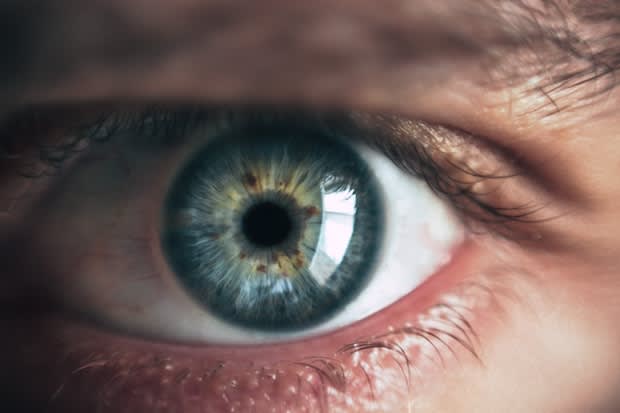Table of Contents
III. What Not to Do When Someone is Seizing
VI. Spotting Other Forms of Seizures
Getting Help
Typically, those who have a seizure disorder will be prescribed medications like Lamictal (lamotrigine), Dilantin (phenytoin), and Topamax (topiramate) but sometimes seizures still occur. When someone is experiencing a seizure, the priority is to protect them from dangerous situations. A dramatic seizure that causes loss of consciousness or body stiffening can make a normal environment life-threatening. During a seizure, it is important to constantly look for signs that the person having a seizure will need emergency medical attention. Check for the following and call 911 if any of these signs are present:
Check if the person is struggling to breathe. Continue to monitor for any difficulty breathing even after the seizure has stopped. If there is any sign of labored breathing, they may require emergency medical attention.
Assess their level of consciousness. After the seizure, talk calmly to the person to gauge how much mental clarity they have regained. If the person cannot wake up, call 911 immediately.
See if they are injured. Examine the person to make sure they have not sustained bruises or cuts during the seizure. Note whether there was any trauma to the head. If so, call for medical attention. Did the seizure last longer than 5 minutes? If this is the case, call 911 as the person could be at risk of brain damage. Did the person suffer back to back seizures? If you encounter someone having a second seizure soon after the first, emergency medical attention is also needed. [1] To protect someone who is suffering from a seizure, calmly position them away from anything hazardous. During a seizure, erratic movements and jerks mean that ordinary objects also pose a threat. Steer them away from table edges, glass items, and fireplaces. In public, guide them away from balconies, train platforms, and busy streets. At an appropriate time, check for any medical alert ID to see if they have a specific condition. If possible, quickly note the time. This is useful later on to know how long their seizure lasts. Remember, a seizure that lasts for more than five minutes requires immediate emergency assistance. If the person is unconscious, help lie them down on the ground while supporting their head. Make sure they are on their side with their mouth pointed toward the ground. Doing so will stop them from choking on their saliva. If they are aware, help them feel at ease by sitting them down and loosening any tight clothing. It may help to remove any eyeglasses. Finally, offer transportation or wait with them until help arrives. [2] [3] There are misconceptions that a person suffering from a seizure can swallow their tongue. This is not true, and you should not place anything in their mouth as this can hurt their teeth and jaw. Do not place your fingers into their mouth because the seizure can cause them to bite down with tremendous force. Avoid attempting to stop their muscle spasms and movements by holding them down. Only offer water after they fully regain awareness, and only attempt CPR if they do not start breathing again after the seizure has stopped. [1] Your course of action will also depend on other circumstances, such as where the seizure occurs and any health condition that the sufferer has. If the seizure happens in a swimming pool or any body of water, pull the person onto land and immediately check to see if they are breathing. If necessary, you may want to attempt CPR right away if no breath is detected. Whenever water is involved, call 911 and seek medical assistance. Even if they seem normal again, a checkup is required to rule out the risk of heart or lung damage. [1] [4] If you are helping someone having a seizure while traveling on an airplane, fold up the seat arms to make space for the person to lie down. Use available pillows and blankets to support the head and turn the person on their side. If you deem emergency medical help is needed, alert the flight attendant. [7] If, at any point, you learn that the person has heart disease, diabetes, or is pregnant, call 911. [1] When the seizure is over, it is important to understand that they may still feel confused. Their memory may not recover instantly, which can leave them feeling disoriented if left on their own. If you are helping a stranger, look after their backpack or their purse until they recover or someone they know takes over. Call someone they know for assistance or accompany them to their destination. If you are helping someone familiar to you, continue to monitor for complaints of fever or other forms of pain. If problems persist, encourage a checkup with their doctor. [5] Seizures that cause a loss of muscle control or convulsions are easy to identify and cover most kinds of seizures. However, absence seizures are difficult to notice because they are undramatic and often display themselves subtly. A person experiencing an absence seizure might stare blankly into space, twitch their lips, or fidget with their fingers. Though absence seizures start and end under the radar, they can still cause a person to fall to the ground. To help someone who is having an absence seizure, accompany them until they feel like themselves again. No first aid is generally needed. Lead them into a safe space and help them feel comfortable. [6] Tell the person what happened. Let them know what symptoms they displayed, how long the seizure lasted, and any injuries they sustained. This will equip them to communicate with their doctor. From here, it will be up to them and their doctor what kinds of preventive steps they decide to take. Their seizures' frequency and intensity can be controlled with drugs like Lamictal (lamotrigine), Dilantin (phenytoin), and Topamax (topiramate). Encouraging a proper conversation with their doctor will fast track them to finding the best solution for their epilepsy. The content in this article is intended for informational purposes only. This website does not provide medical advice. In all circumstances, you should always seek the advice of your physician and/or other qualified health professionals(s) for drug, medical condition, or treatment advice. The content provided on this website is not a substitute for professional medical advice, diagnosis, or treatment.
Seizure First Aid
What Not to Do When Someone is Seizing

Hazards and Complications
After the Seizure
Spotting Other Forms of Seizures

What Else Can I Do?
